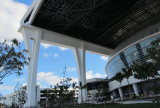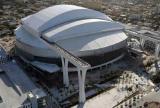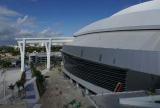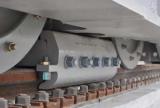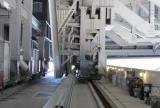The new Marlins Ballpark, constructed on the site of the legendary Orange Bowl in the Little Havana neighborhood of Miami, Florida, was designed to be a uniquely “Miami” venue.
To protect fans from the blazing tropical sun, the new ballpark incorporates a retractable roof designed to completely expose the stadium’s seating to the sun when desired, but also capable of fully shading the entire stadium.
The roof comprises three stacking panels: one large upper panel and two smaller lower panels which rest below the upper panel when the roof is fully retracted. When opening or closing the roof, the operations crew can move all the panels together, or operate each one independently. This freedom allows the crew to shade particular sections of the stadium while leaving others exposed to the sun if desired.
The electrically powered roof is operated with regenerative drives that feed energy back into the stadium’s power grid when the roof is braking or being pushed by wind forces.
Further, it is estimated to cost less than $10 in electricity for each operation, maintaining the facility’s LEED status. Due to the intense weather Miami can endure, the roof has also been designed with the utmost concern for safety. A series of clamps and turn-buckles can be deployed to protect the roof in high-wind and hurricane conditions, preventing unintended motion of the roof panels.
Finally, with intuitive and advanced technology, the roof is moved by a single individual in a control room. A collection of cameras, sensors, and feedback/diagnostic systems reports on the roof progress and monitors conditions of the roof panels and mechanization to ensure safe operation.
Florida baseball fans can enjoy the sunny, welcoming weather of the Miami area, but be sure they will be safe from rain cancellation or getting soaked themselves when the Gulf weather begins to stir. With unmatched technology, Marlins Ballpark operators and owners can be sure their facility will keep fans coming back -- and will keep the game going -- rain or shine.



